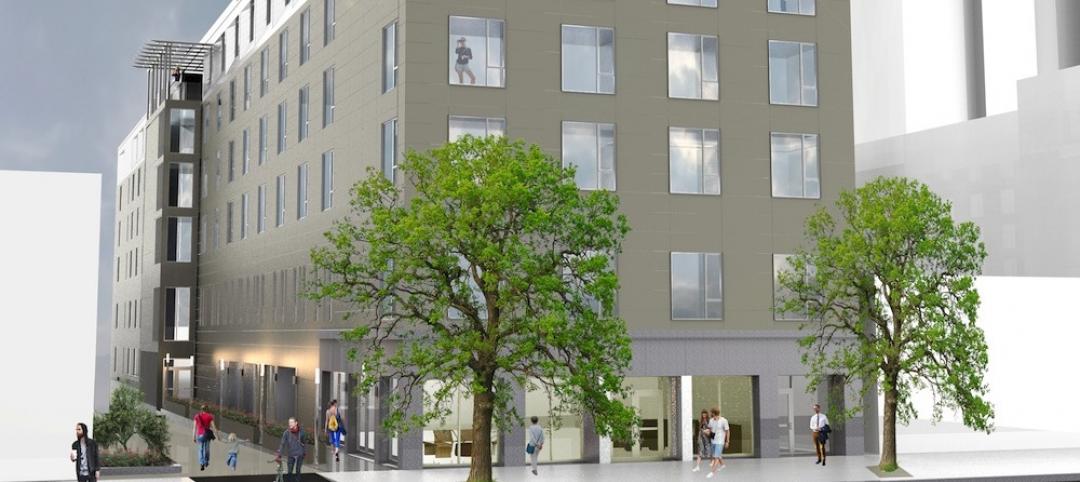In late November, the Alabama Board of Adjustment denied a $1 million lawsuit brought by parents of an Auburn University student who was fatally shot on campus in March 2008. The victim’s father said his main reason for suing the school was to push Auburn to reinstate its campus police department. The university had dissolved its police force in 2004 and contracted with the city’s police department for campus protection.
This case illustrates the potential liability attached to campus public safety programs. Seven years after the mass shootings at Virginia Tech and six years after a similar incident at Northern Illinois University, colleges and universities continue to shake up their emergency communications and response capabilities to shootings and other criminal threats. NIU is now among the many colleges that have systems to transmit alerts to students via email, text, social media, and annunciation systems equipped with sirens.
For more on university security, read BD+C's Special Report: "How security is influencing campus design and construction"
State-mandated alert systems. Many states now mandate that campuses have active, sophisticated alert systems that are immediate and can reach a wide range of people. Within minutes of shots being fired outside Florida State University’s Strozier Library last November, FSU police issued an alert to 40,000 students. It read: “Dangerous Situation! Main Campus—Tallahassee. Seek shelter immediately, away from doors and windows.” Tallahassee police swept in and killed the gunman, who had wounded three people.
Smartphone technology and application software have made transmitting mass alerts simpler. Kristina Anderson, a survivor of the 2007 Virginia Tech shooting spree—a 19-year-old sophomore at the time, she was struck by three bullets—co-developed LiveSafe, a GPS-enabled app that can be used to contact the police via chat, video, and voice. It has been in use at Virginia Commonwealth University, Richmond, since August 2013.
Electronic reader systems with personal PIN codes. These have become fairly common. The ID cards can also be used as debit cards. But what’s becoming a “big deal,” according to security consultant Fred Miehl, Senior Security Consultant, LynStaar Engineering, is a new category called video analytics. This includes cameras that have been programmed to spot unusual movements and send out an immediate alarm, or video imagery that can be linked to images of criminals in police databases. All this technology is in the development phase.
Training and preparedness programs. Many security experts say that training students, faculty, and staff to be alert to potential threats is essential to any public safety program. The University of Pennsylvania conducts more than 200 safety workshops and forums each year for students, faculty, and staff. Since 2012, Bowling Green (Ohio) University has been training its campus community members about their options in an emergency through a program called ALICE—Alert, Lockdown, Inform, Counter, Evacuate.
Mental health intervention. More colleges and universities are bringing mental health and psychology experts into their public safety networks to help identify and assist at-risk students, faculty, and staff before things get out of hand. Shootings, arson, and rape may not be predictable, “but they are preventable,” says Brian Van Brunt, President, National Behavioral Intervention Team Association, and Senior Vice President, National Center for Higher Education Risk Management.
One public policy issue of special concern to academia is the threat to privacy from the proliferation of camera surveillance on campus. In response, the University of Pennsylvania has restricted its surveillance to security and safety matters and may not intrude on private matters. It has established a monitoring panel comprised of students, faculty, and staff to address such questions as where cameras should be placed to protect privacy. Penn staff who monitor camera systems must sign confidentiality agreements and are prohibited from leaking videos of, say, public student intimacy, to social media.
Related Stories
Office Buildings | Jun 10, 2016
Form4 designs curved roofs for project at Stanford Research Park
Fabricated of painted recycled aluminum, the wavy roofs at the Innovation Curve campus will symbolize the R&D process and make four buildings more sustainable.
University Buildings | Jun 9, 2016
Designing for interdisciplinary communication in university buildings
Bringing people together remains the main objective when designing academic projects. SRG Design Principal Kent Duffy encourages interaction and discovery with a variety of approaches.
Building Team Awards | May 31, 2016
Gonzaga's new student center is a bustling social hub
Retail mall features, comfortable furniture, and floor-to-ceiling glass add vibrancy to the new John J. Hemmingson Center.
University Buildings | May 26, 2016
U. of Chicago approves Diller Scofidio + Renfro design for new campus building
With a two-story base and 165-foot tower, the Rubenstein Forum will have room for informal meetings, lectures, and other university events.
University Buildings | Apr 27, 2016
SmithGroupJJR’s Electrical and Computer Engineering Building named 2016 Lab of the Year
Sustainable features like chilled beams and solar screens help the University of Illinois research facility use 50% less energy than minimum building energy efficiency standards.
University Buildings | Apr 25, 2016
New University of Calgary research center features reconfigurable 'spine'
The heart of the Taylor Institute can be anything from a teaching lab to a 400-seat theater.
University Buildings | Apr 13, 2016
Technology defines growth at Ringling College of Arts & Design
Named America's “most wired campus" in 2014, Ringling is adding a library, visual arts center, soundstage, and art museum.
University Buildings | Apr 13, 2016
5 ways universities use new buildings to stay competitive
From incubators to innovation centers, schools desire ‘iconic gateways’ that appeal to students, faculty, entrepreneurs, and the community.
University Buildings | Apr 4, 2016
3 key trends in student housing for Boston’s higher education community
The city wants to add 18,500 student residence beds by the year 2030. CannonDesign's Lynne Deninger identifies three strategies that will help schools maximize value over the next decade or so.
University Buildings | Mar 15, 2016
Behnisch Architekten designs Harvard’s proposed Science and Engineering Complex
The 497,000-sf building will be the home of the John A. Paulson School of Engineering and Applied Sciences.

















